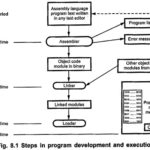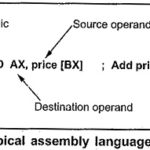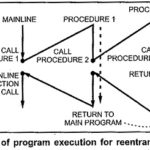Assembly Language Programming Articles:
Program Development and Execution: The steps involved in Program Development and Execution of assembly language programs. Fig. 8.1 shows these steps. The left side of the figure shows the time period, at which each step in the overall process takes place. The … (Read More)
Assembly Instruction Format: Although each Assembly Instruction Format has its own unique syntactical structure, such as requiring upper case or lower case, or requiring colons after label definitions we discuss the common features that assembler shares. The assembly text is usually divided … (Read More)
Modular Programming in 8086 Microprocessor: Many programs are too large to be developed by one programmer. Such programs are developed by team of programmers. They divide a large program into smaller modules. Then each Modular Programming is individually written, tested and … (Read More)
Parameter Passing Techniques in Microprocessor: Parameter Passing Techniques in Microprocessor – Whenever we need to use a group of instructions several times throughout a program there are two ways we can avoid having to write the group of instructions each time … (Read More)
Macros in Microprocessor: Macro is a group of instructions. The Macros in Microprocessor assembler generates the code in the program each time where the macro is ‘called’. Macros can be defined by MACRO and ENDM assembler directives. Creating macro is very … (Read More)
Conditional Statement in Assembly Language Program: Assembler supports the use of Conditional Statement in Assembly Language Program. It also allows to use them in macro sequences. These conditional statements control the flow of the program execution. Let us see the conditional … (Read More)


